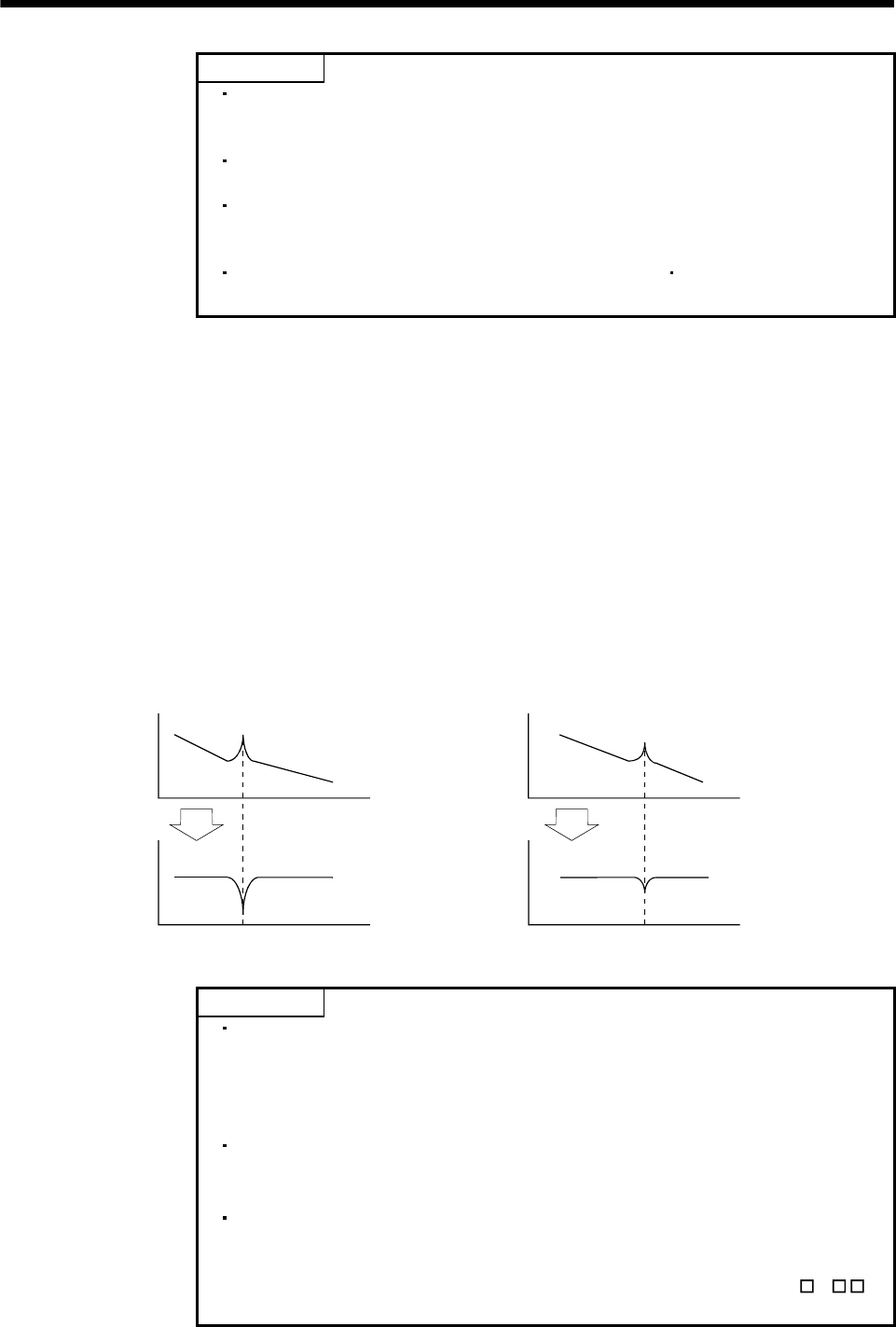
7 - 3
7. SPECIAL ADJUSTMENT FUNCTIONS
POINT
If the frequency of machine resonance is unknown, decrease the notch
frequency from higher to lower ones in order. The optimum notch
frequency is set at the point where vibration is minimal.
A deeper notch has a higher effect on machine resonance suppression but
increases a phase delay and may increase vibration.
The machine characteristic can be grasped beforehand by the machine
analyzer on the MR Configurator (servo configuration software). This
allows the required notch frequency and depth to be determined.
Resonance may occur if DRU parameter No. 58 59 is used to select a
close notch frequency and set a deep notch.
(b) Machine resonance suppression filter 2 (DRU parameter No. 59)
The setting method of machine resonance suppression filter 2 (DRU parameter No. 59) is the same
as that of machine resonance suppression filter 1 (DRU parameter No. 58). However, the machine
resonance suppression filter 2 can be set independently of whether adaptive vibration suppression
control is valid or invalid.
7.3 Adaptive vibration suppression control
(1) Function
Adaptive vibration suppression control is a function in which the drive unit detects machine resonance
and sets the filter characteristics automatically to suppress mechanical system vibration. Since the
filter characteristics (frequency, depth) are set automatically, you need not be conscious of the
resonance frequency of a mechanical system. Also, while adaptive vibration suppression control is
valid, the servo amplifier always detects machine resonance, and if the resonance frequency changes,
it changes the filter characteristics in response to that frequency.
Mechanical
system
response
level
Mechanical
system
response
level
Machine resonance point
Machine resonance point
Frequency Frequenc
y
Notch
depth
Notch
depth
Notch frequency Notch frequency
Frequency Frequenc
y
When machine resonance is large and frequency is low When machine resonance is small and frequency is high
POINT
The machine resonance frequency which adaptive vibration suppression
control can respond to is about 150 to 500Hz. Adaptive vibration
suppression control has no effect on the resonance frequency outside this
range. Use the machine resonance suppression filter for the machine
resonance of such frequency.
Adaptive vibration suppression control may provide no effect on a
mechanical system which has complex resonance characteristics or which
has too large resonance.
Under operating conditions in which sudden disturbance torque is imposed
during operation, the detection of the resonance frequency may malfunction
temporarily, causing machine vibration. In such a case, set adaptive
vibration suppression control to be "held" (DRU parameter No. 60:
2 )
to fix the characteristics of the adaptive vibration suppression control filter.


















